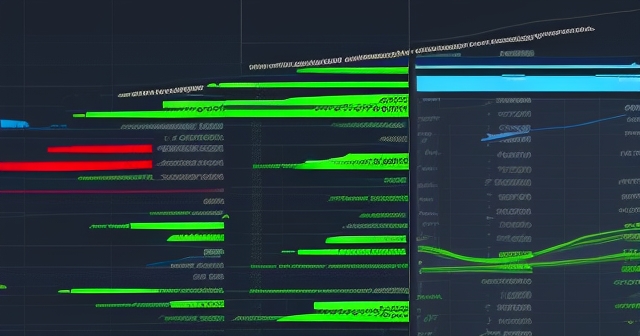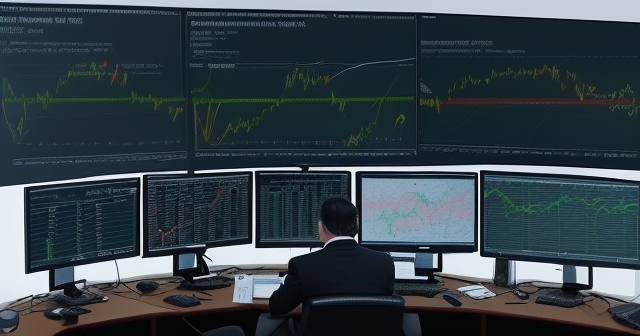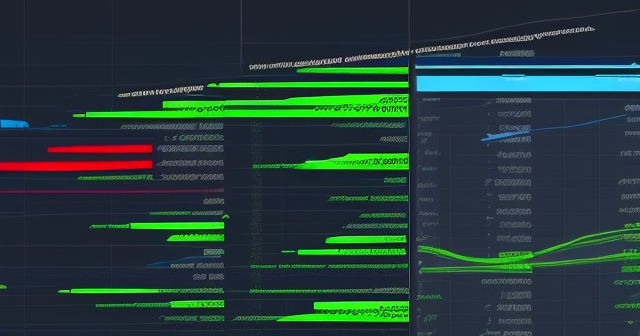Understanding CTAs: Commodity Trading Advisors in the World of Futures and Managed Futures
Welcome to a deep dive into the fascinating world of financial derivatives and the specialized professionals who navigate them. When you encounter the acronym “CTA” in the financial sphere, it most commonly refers to a Commodity Trading Advisor. These are individuals or firms registered to provide expert guidance and often manage client accounts for trading complex instruments like futures contracts, options on futures, retail off-exchange forex contracts, and swaps. Unlike traditional stockbrokers or investment advisors who primarily deal with equities and bonds, CTAs operate in the dynamic realm of derivatives, markets known for their leverage and volatility.
Think of a CTA as a highly specialized captain steering a ship through diverse and sometimes turbulent global waters – the futures markets. They utilize unique trading strategies, often systematic or quantitative in nature, to seek opportunities across a wide array of asset classes including commodities, currencies, equity indices, and fixed income. Understanding what a CTA is, how they are regulated, the strategies they employ, and their typical performance characteristics is crucial for any investor looking to diversify their portfolio beyond traditional assets or gain exposure to the derivatives space.
Before we delve deeper, it’s important to note that while we focus on the prevalent financial meaning of “CTA” as Commodity Trading Advisor, this acronym can have other significant meanings in different contexts. We will address one particularly important distinction later in this article to ensure clarity.
But for now, let’s focus on the core concept: the Commodity Trading Advisor. What specific services do they offer, and why is their role distinct within the broader financial ecosystem? Are they simply market timers, or is there a deeper methodology at play?

Defining the Commodity Trading Advisor and Their Scope
A Commodity Trading Advisor (CTA) is essentially an entity that provides advice or directs accounts for trading specific futures and options contracts. This definition is legally mandated and regulated in jurisdictions like the United States. Their scope extends to:
- Futures Contracts: Agreements to buy or sell an asset at a predetermined price and date in the future.
- Options on Futures: Giving the holder the right, but not the obligation, to buy or sell a specific futures contract at a certain price before it expires.
- Retail Off-Exchange Forex (FX) Contracts: Agreements to buy or sell currencies at a determined price, traded off a regulated exchange (though regulatory oversight still applies).
- Swaps: Derivative contracts through which two parties exchange financial instruments, payments, or other financial flows for a certain time.
The key function of a CTA is to manage or advise on accounts trading these leveraged products. This isn’t just casual advice; it’s specific, tailored recommendations or direct management of client funds dedicated to derivatives trading. Because of the inherent leverage and risk in futures and options markets, the regulatory environment surrounding CTAs is robust and designed to protect investors.
Have you ever considered trading derivatives? You know they can offer potential for high returns, but also significant risk. This is precisely why professional guidance from a regulated CTA is often sought.
| Type | Description | Example |
|---|---|---|
| Futures Contracts | Agreements to buy or sell an asset at a predetermined price and date in the future. | Buying a corn futures contract for delivery in three months. |
| Options on Futures | Gives the holder the right to buy or sell a specific futures contract at a certain price before it expires. | Buying a call option on oil futures. |
| Retail Off-Exchange Forex Contracts | Agreements to buy or sell currencies at a certain price, traded away from regulated exchanges. | Trading USD/EUR off-exchange. |
| Swaps | Derivative contracts for exchanging cash flows or other financial instruments. | Interest rate swaps between two parties. |
The Regulatory Landscape: CFTC and NFA Oversight
Operating as a Commodity Trading Advisor in the United States is not a casual affair. It requires registration and adherence to strict rules. The primary regulatory bodies are the Commodity Futures Trading Commission (CFTC) and the National Futures Association (NFA).
- CFTC: This is an independent agency of the U.S. government created in 1974 by the Commodity Futures Trading Commission Act. Its mandate is to protect market users and the public from fraud, manipulation, and abusive practices related to the sale of commodity and financial futures and options, and to foster open, competitive, and financially sound markets. The CFTC provides the overarching legal framework.
- NFA: This is the self-regulatory organization for the U.S. derivatives industry. Established in 1982, the NFA is authorized by the CFTC to oversee firms and individuals who deal with the public in the U.S. futures, foreign currency (forex), and OTC derivatives markets. The NFA is responsible for registering CTAs, enforcing compliance with rules, and providing arbitration for disputes.
So, while the CFTC sets the broad regulations derived from acts like the Commodity Exchange Act (which itself evolved from the earlier Grain Futures Act of 1922), the NFA is often the first point of contact and ongoing compliance supervisor for CTAs. Think of the CFTC as the legislature and the NFA as the enforcement agency and professional standards board.
This regulatory structure evolved significantly over time, often spurred by periods of market stress or misconduct. A notable historical event influencing this framework was the Great Salad Oil Swindle of 1963, where fraudulent warehouse receipts for soybean oil were used to secure loans, leading to significant market disruption and highlighting the need for stronger oversight in commodity markets. This event helped pave the way for the creation of the CFTC in 1974, centralizing and strengthening federal regulation of futures trading and those who advise on it.

Becoming a Registered CTA: Requirements and Exemptions
To operate as a registered Commodity Trading Advisor, individuals and firms must meet specific criteria. The most common requirement for individuals is passing the Series 3 National Commodity Futures Exam. This exam tests knowledge of the derivatives markets, regulations, and the responsibilities of registered professionals.
Firms seeking registration must also meet capital requirements, establish robust compliance procedures, and ensure their principals and employees are qualified and registered. The NFA maintains a public database where you can verify the registration status of any individual or firm claiming to be a CTA.
However, like many regulations, there are exemptions. Certain individuals or firms may be exempt from CTA registration if:
- They provide advice to a very small number of clients (typically fewer than 15), provided they do not hold themselves out to the public as a CTA and are not required to register for other reasons.
- Their CTA advice is incidental to their business and they are already registered and regulated in another capacity (e.g., registered as a broker-dealer or investment adviser), and their advice is provided only in a fiduciary capacity to certain entities.
- They advise only specific sophisticated entities like registered investment companies or certain foreign persons.
These exemptions acknowledge that professional advice on derivatives might be given in various contexts, but the core activity of providing tailored trading advice or managing accounts specifically for derivatives trading generally triggers the need for registration. The purpose remains investor protection – ensuring that those providing advice on these leveraged instruments have demonstrated competence and adhere to regulatory standards.
Doesn’t this rigorous process make you feel a bit more secure when considering engaging with a registered CTA?

Strategies Employed by CTAs: Managed Futures Explained
CTAs primarily engage in what is known as managed futures. This term refers to investment strategies executed in the global futures and options markets, typically managed by professional money managers like CTAs. Managed futures strategies are distinct from traditional investment approaches because they can trade a vast universe of markets and can profit from both rising and falling prices (go long or short).
Managed futures strategies generally fall into two broad categories:
- Systematic Trading: These strategies are based on quantitative models and algorithms. Trading decisions are driven by predefined rules and technical indicators, often executed automatically by computer programs. The models analyze vast amounts of data across numerous markets simultaneously to identify trading signals. Systematic trading aims to remove human emotion from the decision-making process, relying purely on data and statistical probabilities.
- Discretionary Trading: These strategies rely on the portfolio manager’s qualitative judgment, experience, and analysis. While they may use technical and fundamental data, the final trading decisions are made by the manager based on their interpretation of market conditions, geopolitical events, supply/demand dynamics, and other factors. This approach is more flexible but can be influenced by human biases.
Many large CTA firms employ predominantly systematic approaches due to the ability to scale strategies across numerous markets and manage risk efficiently based on models. However, discretionary CTAs also exist and can offer unique insights, particularly in less liquid or rapidly changing markets where models might lag.
Do you prefer the idea of cold, hard data making trading decisions, or the experienced hand of a seasoned trader?
The Dominance of Trend Following
Within the managed futures universe, one strategy stands out as particularly common among CTAs: Trend Following. This strategy is deceptively simple in its core concept but sophisticated in its implementation. The fundamental idea is to identify and capitalize on sustained price movements or “trends” in various markets. Trend followers buy when prices are rising and sell when prices are falling.
Trend following is typically a systematic strategy, using price-based indicators (like moving averages, breakout levels, or channel analysis) to determine the direction of a trend and generate trading signals. A key characteristic is its agnostic approach to market type; trend followers don’t care *why* a market is trending, only *that* it is trending. This allows them to trade a vast and diverse portfolio of global markets, including:
- Agricultural commodities (corn, soybeans, wheat)
- Energy commodities (crude oil, natural gas)
- Metals (gold, silver, copper)
- Equity indices (S&P 500, Euro Stoxx 50, Nikkei 225)
- Fixed income futures (U.S. Treasuries, German Bunds, Japanese Government Bonds)
- Currencies (Euro, Yen, British Pound, Australian Dollar)
By trading across such a wide array of markets, trend-following CTAs aim to capture trends wherever they occur, reducing reliance on any single market or asset class. This diversification across markets is a critical component of their risk management.
Trend following profits most during periods of strong, sustained moves. Conversely, it tends to struggle and experience small losses during non-trending, choppy, or mean-reverting market conditions. This leads to a specific return profile we will discuss shortly.

Systematic vs. Discretionary Approaches in Detail
Let’s elaborate slightly on the systematic versus discretionary divide, as it informs the investor’s experience with a CTA.
Systematic CTAs:
- Process: Driven by algorithms and computer models developed through extensive quantitative research (backtesting, optimization).
- Transparency: Often described as a “black box” because the specific model rules are proprietary and not disclosed to investors. However, the *process* and performance methodology are typically transparent.
- Behavior: Executes trades mechanically when model signals are generated. Scalable to handle many markets and large trade sizes. Less susceptible to human error or emotional decisions like panic selling or holding onto losing trades too long.
- Strength: Consistency of application, ability to test and refine strategies based on historical data, broad market coverage.
- Weakness: Can be slow to adapt to genuinely new market regimes not seen in historical data, potential for ‘model decay’ or overfitting, lack of human intuition for Black Swan events outside model parameters.
Discretionary CTAs:
- Process: Based on the manager’s judgment, fundamental analysis, technical analysis, macroeconomic outlook, and experience.
- Transparency: The decision-making process is often more transparent in terms of the *type* of analysis used (e.g., “we analyze supply/demand reports for commodities,” “we look at central bank statements for currencies”), though the specific timing and sizing of trades remain at the manager’s discretion.
- Behavior: Decisions are made by the manager. Can be more nimble in reacting to sudden, unprecedented events. Can apply subjective filters to avoid trades indicated by technical signals but contradicted by fundamental logic.
- Strength: Adaptability to new market conditions, ability to incorporate qualitative information, potential for deep expertise in specific market sectors.
- Weakness: Susceptible to human emotions and biases, capacity constraints (harder to manage very large amounts of capital across many markets purely discretionarily), performance can be highly dependent on the individual manager’s skill and current form.
Most large, well-known CTA firms today employ predominantly systematic methodologies, particularly for trend following, due to the requirements of managing large asset bases and trading hundreds of futures markets globally. However, both approaches have merits, and some firms even combine elements of both.
Regardless of the approach, effective risk management is paramount. This includes setting limits on position sizes, implementing stop-loss orders (often called “stop-outs” in this context) to cut losing trades quickly, and carefully managing leverage to prevent catastrophic losses.
Understanding CTA Return Characteristics
Investing in CTAs, typically through managed futures funds, offers a return profile that is markedly different from investing in stocks or bonds. This distinct profile is a key reason why investors consider allocating capital to this space. Here are some key characteristics:
- Non-Normal Distribution (Skewness): CTA returns are often described as having positive skewness. This means they tend to exhibit frequent small losses interspersed with infrequent large gains. Small losses occur during periods when markets are non-trending or whipsawing, causing the CTA to be stopped out of positions for minor losses. Large gains occur when strong, sustained trends develop across multiple markets simultaneously, allowing positions to build significant profits before the trend eventually reverses.
- Volatility: Managed futures strategies can be volatile. While they might not have consistent month-to-month gains, they can have very strong periods followed by flat or losing periods.
- Drawdowns: Significant periods of loss from a peak are possible. Drawdowns often occur when previously strong trends reverse sharply and quickly, or when markets remain in prolonged non-trending phases, leading to accumulated small losses. Managing drawdowns through rigorous risk controls is critical for CTAs.
- Capacity: Some strategies, particularly those focused on less liquid markets or very short-term signals, can face capacity constraints. As assets under management (AUM) grow, it can become harder to execute trades without impacting market prices, potentially diluting returns.
It’s crucial for investors to understand that a CTA’s performance is not driven by the same factors as a stock portfolio. Stock returns are largely influenced by corporate earnings, economic growth, and equity market sentiment. CTA returns are driven by the presence and duration of market trends across a diverse set of global futures markets.

The Power of Non-Correlation: Diversification and Crisis Alpha
One of the most compelling reasons investors consider allocating to managed futures and CTAs is their historically low, and often negative, correlation with traditional asset classes like equities and fixed income. This lack of correlation is a powerful tool for portfolio diversification.
Why are CTAs uncorrelated? Several reasons:
- Market Universe: They trade markets (commodities, currencies, global bonds) that are often driven by different supply/demand dynamics, central bank policies, or geopolitical factors than stock markets.
- Long/Short Capability: CTAs can profit when markets fall by taking short positions, whereas traditional long-only equity portfolios only profit when markets rise.
- Trading Strategy: Trend following is designed to capture *directional moves* regardless of the underlying asset type. A strong trend in currencies might occur while equities are flat or falling, and vice-versa.
This non-correlation means that when your stock or bond portfolio might be struggling during challenging economic times or market crises, your allocation to a CTA strategy *could* potentially generate positive returns. This phenomenon is often referred to as “crisis alpha.”
Historical examples cited in financial literature show that managed futures strategies have, at times, performed well during significant equity market downturns. For instance, the Asian Crisis in 1997-1998, the dot-com bubble burst in 2000-2002, and the Global Financial Crisis of 2008 saw significant negative returns in equity markets, while some managed futures indices showed positive performance. This is because strong trends often emerge during periods of crisis and uncertainty (e.g., flight to quality driving bond prices up, panic selling driving equity indices down, sharp moves in currencies or commodities).
Adding an uncorrelated asset class like managed futures can potentially:
- Reduce overall portfolio volatility without necessarily sacrificing return.
- Improve risk-adjusted returns (e.g., measured by the Sharpe Ratio) over the long term.
- Provide potential gains during periods when traditional assets are underperforming.
It’s like having an insurance policy that can also make money. However, it’s not a guarantee, and CTAs can also experience drawdowns during different market environments.
Does the idea of having an investment that might perform well when others are struggling appeal to you?
Navigating Volatility and Drawdowns
While the potential for diversification and crisis alpha is attractive, it’s crucial to have realistic expectations regarding the volatility and potential drawdowns inherent in managed futures strategies. As mentioned, the return profile features small losses punctuated by large gains. This means:
- Whipsaws Happen: In non-trending or choppy markets, a trend-following strategy will likely enter and exit positions repeatedly for small losses as it attempts to identify a trend that doesn’t materialize or quickly reverses. These periods can accumulate small losses, leading to drawdowns.
- Sharp Reversals Hurt: If a strong trend suddenly and unexpectedly reverses, the CTA’s positions built on that trend will incur losses. While stop-loss orders are used to limit losses, large positions accumulated during a strong trend can still result in a significant hit if the exit isn’t perfect or if market gaps occur.
- Not Always an Anchor: While CTAs have historically shown low correlation, it’s not zero, and they don’t always provide positive returns during every market downturn. Their performance in a crisis depends on whether distinct, tradable trends emerge during that specific crisis.
Therefore, investors in managed futures must have patience and a long-term perspective. They need to be comfortable with periods of volatility and potential drawdowns, trusting that the strategy’s edge lies in capturing significant trends over a full market cycle, providing diversification benefits that enhance the overall portfolio’s risk-return profile over time.
Understanding these characteristics is key to successful investing in this space. It’s about allocating a portion of your portfolio to a strategy that behaves differently from the norm, accepting its specific risks for its potential benefits.
Accessing CTA Strategies: CTA Funds and Managed Accounts
How do investors actually gain exposure to Commodity Trading Advisors and their managed futures strategies?
The most common ways are through:
- CTA Funds (Managed Futures Funds): These are pooled investment vehicles, often structured as hedge funds or mutual funds (though often requiring higher minimum investments and subject to different regulations than typical retail mutual funds). Investors buy shares or units in the fund, which is then managed by the CTA firm. This is the most accessible route for many investors, as it pools capital and handles the administrative burden.
- Managed Accounts: For larger investors (often institutions or high-net-worth individuals meeting specific suitability requirements), it’s possible to open a separate managed account directly with a CTA firm. The CTA trades the client’s segregated funds according to their strategy. This offers greater transparency and control but requires a higher minimum investment.
CTA Funds come in various forms, from large, diversified multi-strategy funds to smaller funds focused on specific strategies (like short-term trend following) or specific markets (like energy futures). They typically charge management fees (an annual percentage of assets) and performance fees (a percentage of profits, often called an “incentive fee”), common in the alternative investment space.
When considering a CTA Fund or managed account, potential investors perform significant due diligence. This includes reviewing the CTA’s regulatory history (via the NFA’s BASIC database), analyzing their track record (understanding the strategy’s historical performance in various market conditions), evaluating their risk management framework, understanding their fee structure, and assessing the firm’s operational stability.
Are you more inclined towards pooled investments or having your own segregated account managed by a professional?
Key Considerations for Investors
Before allocating capital to a Commodity Trading Advisor, it’s vital to consider several factors beyond just historical performance:
- Risk Tolerance: Are you comfortable with the volatility and potential for significant drawdowns inherent in managed futures strategies? Understand that periods of loss are part of the process, especially during market transitions or non-trending environments.
- Investment Horizon: Managed futures strategies often require a long-term perspective (multiple years) to realize their potential benefits, particularly diversification over a full market cycle. Short-term performance can be highly variable.
- Liquidity: While futures markets are generally very liquid, accessing a CTA Fund might involve certain liquidity constraints (e.g., quarterly redemptions with notice periods) compared to daily liquidity of stocks or ETFs. Managed accounts offer direct control over funds but still require understanding the liquidity of the underlying futures markets traded.
- Fees: Be aware of the fee structure, including management and performance fees, which can impact net returns.
- Transparency: Understand the level of transparency offered. While specific algorithmic details might be proprietary, a good CTA should be transparent about their overall strategy, risk management approach, and portfolio holdings (at least with some delay). The ‘black box’ nature of systematic strategies can be a hurdle for some investors seeking deeper insight into every trade decision.
Investing in CTAs is not a substitute for a traditional portfolio but rather a potential complement. Its value proposition lies primarily in diversification and the potential to capture trends in markets largely uncorrelated with traditional assets, offering a different driver of return and potentially enhancing overall portfolio efficiency.
Do you feel equipped to evaluate these factors when looking at a CTA investment opportunity?
The Other CTA: Corporate Transparency Act
Now, let’s address the potential for confusion mentioned earlier. While our extensive discussion has focused on the Commodity Trading Advisor (CTA), you may encounter the same acronym in a completely different context within the legal and compliance world: the Corporate Transparency Act (CTA).
Enacted as part of the National Defense Authorization Act for Fiscal Year 2021, the Corporate Transparency Act is a U.S. federal law designed to combat illicit finance, including money laundering, terrorist financing, and tax fraud. It does this by requiring certain companies to report information about their beneficial owners to the U.S. Treasury Department’s Financial Crimes Enforcement Network (FinCEN).
This law became effective on January 1, 2024. Its requirements are entirely separate from the regulation of derivatives trading or the activities of a Commodity Trading Advisor. The two CTAs represent vastly different concepts within the financial and legal landscape.
It’s crucial to distinguish between the two meanings based on the context:
- If the discussion is about trading futures, options, forex, or managed accounts, CTA almost certainly means Commodity Trading Advisor.
- If the discussion is about company formation, ownership structures, compliance reporting, or anti-money laundering efforts directed at legal entities, CTA means Corporate Transparency Act.
Clear communication is key in finance, and understanding which “CTA” is being referenced is vital.
Who Must Report Under the Corporate Transparency Act?
Under the Corporate Transparency Act, certain domestic and foreign entities operating in the U.S. must report information about who ultimately owns or controls them. These entities are referred to as “reporting companies.”
A reporting company is generally defined as any entity, such as a corporation, limited liability company (LLC), or other entity created by the filing of a document with a secretary of state or similar office, that does not qualify for one of the 23 specific exemptions.
The purpose is to pierce the veil of shell companies and complex ownership structures to identify the real people who benefit from or control the company – the Beneficial Ownership Information (BOI). This information is reported to FinCEN’s secure, non-public database.
Examples of entities exempt from reporting include:
- Large operating companies (those with more than 20 full-time U.S. employees, more than $5 million in gross receipts or sales, and an operating presence at a physical office in the U.S.).
- Regulated entities like banks, credit unions, broker-dealers, and registered Commodity Trading Advisors.
- Publicly traded companies.
- Tax-exempt entities (like charities) under Internal Revenue Code Section 501(c), as well as political organizations and trusts under Sections 527 and 4947.
- Subsidiaries of certain exempt entities.
The fact that a registered Commodity Trading Advisor is *exempt* from the Corporate Transparency Act’s reporting requirement further underscores that these are two distinct concepts and regulatory regimes, despite sharing an acronym.
Deadlines for reporting depend on when the reporting company was created. Companies formed before January 1, 2024, generally have until January 1, 2025, to file their initial BOI report. Companies formed on or after January 1, 2024, typically have 90 days from their formation to file. Companies formed on or after January 1, 2025, will have 30 days.
If you’re navigating the complexities of corporate structure or compliance, understanding this separate meaning of CTA is just as vital as understanding the Commodity Trading Advisor if you’re exploring derivatives markets.
Exploring Derivatives and Finding the Right Partner
Navigating the world of futures, options, and forex trading can be complex. Whether you choose to trade these markets yourself or allocate capital to a professional manager like a Commodity Trading Advisor, having access to reliable platforms and resources is key.
If you’re exploring forex trading or considering trading a variety of CFD products, the platform you choose makes a significant difference in your experience, access to markets, and execution quality. Choosing a platform with a strong regulatory background and a wide range of instruments is crucial for both risk management and opportunity.
If you are specifically considering starting forex trading or exploring more CFD products, then Moneta Markets is a platform worth considering. Hailing from Australia, it provides access to over 1000 financial instruments, catering to both novice and professional traders with a suitable range of choices.
The right platform can offer the tools you need to analyze markets, implement strategies, and manage your positions effectively, whether you’re executing discretionary trades based on your analysis or exploring algorithmic approaches compatible with the platform’s infrastructure.
Conclusion: CTAs and Their Place in Your Financial Journey
In conclusion, the acronym CTA in finance most prominently refers to a Commodity Trading Advisor – a regulated professional or firm specializing in providing advice or managing accounts for trading complex derivatives like futures, options on futures, forex, and swaps. Operating under the rigorous oversight of the CFTC and NFA, registered CTAs must meet specific qualifications like passing the Series 3 Exam, ensuring a level of expertise and adherence to regulatory standards designed for investor protection, a framework shaped by historical events like the Great Salad Oil Swindle and legislative acts including the Commodity Exchange Act.
CTAs primarily utilize managed futures strategies, with trend following being a prevalent approach across a broad universe of global markets from commodities to currencies and equity indices. These strategies, whether systematic or discretionary, employ rigorous risk management techniques like stop-outs to navigate leveraged positions. While capable of significant gains during strong trends, investors must be aware of the potential for volatility and drawdowns during non-trending or reversing markets.
The key appeal of managed futures, accessed typically through CTA Funds or managed accounts, lies in their potential for diversification. Their historically low to negative correlation with traditional assets, particularly equities, can enhance overall portfolio risk-adjusted returns and potentially provide crisis alpha – positive returns during market downturns when other assets struggle. Understanding the strategy, risk profile, and operational aspects is crucial before investing.
Finally, navigating the financial and legal landscape requires recognizing that the acronym CTA also distinctly refers to the Corporate Transparency Act, a separate law mandating Beneficial Ownership Information (BOI) reporting to FinCEN to combat illicit finance. While registered CTAs (Commodity Trading Advisors) are typically exempt from this reporting, being aware of both meanings prevents potential confusion.
Whether you aspire to understand the mechanics of leveraged trading, seek advanced trading strategies like trend following, or explore alternative investments for diversification, understanding the role and characteristics of Commodity Trading Advisors is a valuable step in your financial education journey. Always remember to conduct thorough due diligence and consider your own investment goals and risk tolerance.
cta acronym financeFAQ
Q:What is a Commodity Trading Advisor (CTA)?
A:A CTA is an individual or firm that provides expert guidance and manages client accounts for trading derivatives.
Q:How are CTAs regulated?
A:CTAs in the U.S. are regulated by the Commodity Futures Trading Commission (CFTC) and the National Futures Association (NFA).
Q:What are managed futures?
A:Managed futures refer to investment strategies executed in global futures and options markets, typically managed by professional money managers like CTAs.
